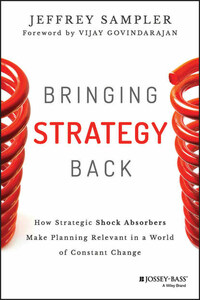Cover Design: Michael J. Freeland
Cover Image: © iStock.com / Zvozdochka
Copyright © 2015 by John Wiley & Sons, Inc. All rights reserved.
Published by Jossey-Bass
A Wiley Brand
One Montgomery Street, Suite 1200, San Francisco, CA 94104-4594 —www.josseybass.com
No part of this publication may be reproduced, stored in a retrieval system, or transmitted in any form or by any means, electronic, mechanical, photocopying, recording, scanning, or otherwise, except as permitted under Section 107 or 108 of the 1976 United States Copyright Act, without either the prior written permission of the publisher, or authorization through payment of the appropriate per-copy fee to the Copyright Clearance Center, Inc., 222 Rosewood Drive, Danvers, MA 01923, 978-750-8400, fax 978-646-8600, or on the Web at www.copyright.com. Requests to the publisher for permission should be addressed to the Permissions Department, John Wiley & Sons, Inc., 111 River Street, Hoboken, NJ 07030, 201-748-6011, fax 201-748-6008, or online at www.wiley.com/go/permissions.
Limit of Liability/Disclaimer of Warranty: While the publisher and author have used their best efforts in preparing this book, they make no representations or warranties with respect to the accuracy or completeness of the contents of this book and specifically disclaim any implied warranties of merchantability or fitness for a particular purpose. No warranty may be created or extended by sales representatives or written sales materials. The advice and strategies contained herein may not be suitable for your situation. You should consult with a professional where appropriate. Neither the publisher nor author shall be liable for any loss of profit or any other commercial damages, including but not limited to special, incidental, consequential, or other damages. Readers should be aware that Internet Web sites offered as citations and/or sources for further information may have changed or disappeared between the time this was written and when it is read.
Jossey-Bass books and products are available through most bookstores. To contact Jossey-Bass directly call our Customer Care Department within the U.S. at 800-956-7739, outside the U.S. at 317-572-3986, or fax 317-572-4002.
Wiley publishes in a variety of print and electronic formats and by print-on-demand. Some material included with standard print versions of this book may not be included in e-books or in print-on-demand. If this book refers to media such as a CD or DVD that is not included in the version you purchased, you may download this material at http://booksupport.wiley.com. For more information about Wiley products, visit www.wiley.com.
Library of Congress Cataloging-in-Publication Data
Sampler, Jeffrey L.
Bringing strategy back: how strategic shock absorbers make planning relevant in a world of constant change / Jeffrey L. Sampler.
pages cm. – (The Jossey-Bass business & management series)
Includes index.
ISBN 978-1-118-83009-3 (hardback) ISBN 978-1-118-83008-6 (pdf) – ISBN 978-1-118-83007-9 (epub)
1. Strategic planning. 2. Organizational change. I. Title.
HD30.28.S254 2015
658.4'092–dc23
2014024323
The Jossey-Bass Business & Management Series
Foreword
Historically, innovations have originated in rich developed countries in the West and later flowed downhill to the populous developing world. But it is also possible for innovations to originate in poor countries and trickle up to the wealthier world. This is what I've termed reverse innovation.
I initially became interested in reverse innovation during a two-year stint as Professor in Residence and Chief Innovation Consultant at General Electric. At the time, GE CEO Jeff Immelt had put a stake in the ground to grow the company organically by meeting the needs and budgets of customers in heavily populated developing markets. As part of that plan, GE went on to introduce revolutionary new product adaptations – a $1,000 handheld electrocardiogram device and a portable, PC-based ultrasound machine that sells for as little as $15,000 – created to serve rural India and China. By developing lower-cost end-user solutions, GE has been able to cultivate an entirely new market. Just as notably, these innovations have since been adapted and sold in the United States and Europe.
It's clear that if rich nations and established multinationals are to continue to thrive, the current generation of innovators must look beyond their own backyard and consider the needs and opportunities in the vast developing world. And the idea of reverse innovation extends well beyond just product creation. For starters, we see pockets of reverse process innovation springing up as well. Hospitals in India, for example, are transforming health care by performing open-heart surgery for $3,000 rather than the $150,000 we see in the United States – and not simply because of lower labor costs, but also because they have adapted standardized processes from assembly-line manufacturing to make the procedure far more cost effective. This type of innovation would be possible anywhere, but it's more probable in poor countries because it meets their needs and requirements.








